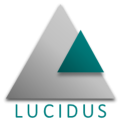
7.Introduction
This is the seventh in a series of articles dealing brought to you by Robert White - CEO of Lucidus Ltd with the subject of 'Value' in the sales process.
In this installment, we discuss the Lucidus Solution to identifying and communicating value.
Solutions
This section is the final part of our discussion on Value and presents the Lucidus approach to solving the problems associated with teasing out value and presenting it to your customers in a way that they can have confidence in.
Our solution is called the Customer Value Module.
It's been under continuous development for over 10 years and is now operating in most markets sectors and geographies. It comfortably overcomes the three hurdles of unidentified value, tools, and process and skills, and guides both parties through a quality decision process. It gives control to the customer by allowing the customer to calculate, understand and own potential value to come from vendor products and/or services. It then allows the agreed value to be tracked to delivery. So let's take a high level view of the principles that make it work.
Overview
The Customer Value Module enables the vendor to provide the customer with an optimal decision-making process. There are two major components - the Customer Value Module process and associated techniques that deal with the hurdles of process and skills and the value assurance simulator and tracker that deals with the hurdle of tools.
Having been equipped to use the diagnostic selling techniques, sales teams deploy the Customer Value Module processes and, working closely with the customer, jointly ascertain the customer's Value Requirement that is electronically loaded into the value assurance simulator.
The simulator then performs a comparison of the customer's Value Requirement against the actual Value Capability of the vendor. This gives an initial result that the customer can then manipulate and test to produce their own results. There are just four simple steps in the whole process: Discover, Diagnose, Design and Deliver.
Discover
The Discover stage has the sales team undertaking guided research prior to contacting the prospective customer. All of the available information is loaded into the simulator and provisional results are obtained. This gives an early view of the likely chances of closing a deal and allows prioritisation of prospects.
Given that sufficient value appears to be available it also provides what we call a Value Assumption. The value assumption is a key weapon in gaining access to the right levels and allows sales teams to avoid a value assault by simply suggesting to the prospect that "x" amount of value might be available to them - and 'would they like to jointly investigate the possibilities'.
So the purpose of the Discover stage is to gain access to the right levels and gain permission to move on to the next stage, which is Diagnose.
Diagnose
Through a series of carefully structured diagnostic conversations the Diagnose stage brings the customer's value requirement into sharp focus and helps the customer to ensure that no value has been missed and the estimates of value are correct.
Design
Having clarified the customer's value requirement, a combination of additional diagnostic conversations, and What-if calculations via the simulator, allow the vendor and customer to come up with a design that maximises the vendor's value capability and delivers the maximum value to the customer.
From the vendor's perspective, this approach has the advantage of ensuring that all possible elements of the vendor's portfolio of products and services are played against the customer's value requirement.
Deliver
Once the design is agreed Delivery can begin and the simulator becomes a device for pre-emptively tracking the agreed value to the customer's bottom line.
The ability to track pre-emptively means that value at risk can be spotted well in advance and corrective action taken. This is a key element in the sales process since it builds trust and the confidence to invest in change. It all adds up to a unified customer-centred buying and selling process.
Summary
The level of sales team support available from the Customer Value Module processes and simulator makes the Customer Value Module very easy to use in the field. Just four steps: use the techniques and tools to target and gain access at the right level and place the relationship on the right footing right from the outset. Then run the diagnose phase and help the customer to refine and confirm its own Value Assumption and Value Requirement; continue working with them through diagnostic conversations and What-if analyses to come up with the optimal approach that maximises the customer's value and the vendor's span of products and services; and then start Delivery and value tracking.
It all adds up to a guided selling and buying process that guides both parties to adopt the right behaviours and arrive at a mutually beneficial result.
Obviously, you don't need to take our word for it. You can always take a look at the feedback we have received from our customers.

